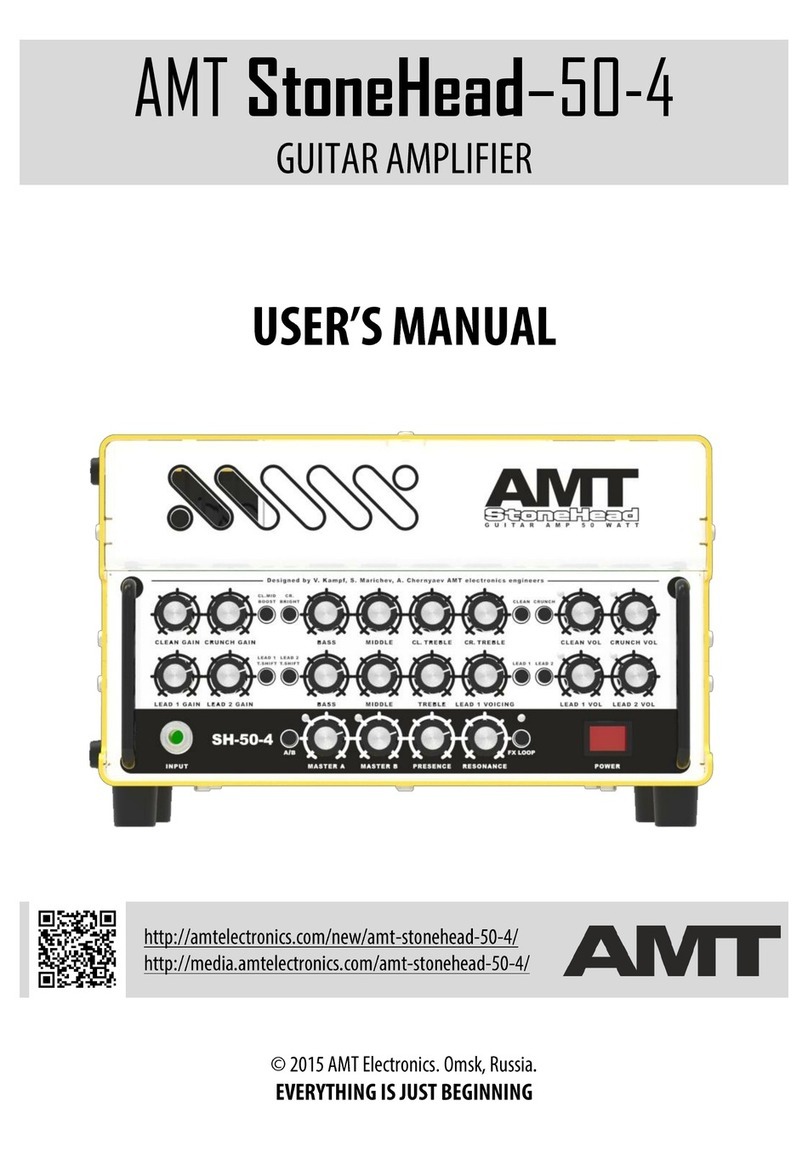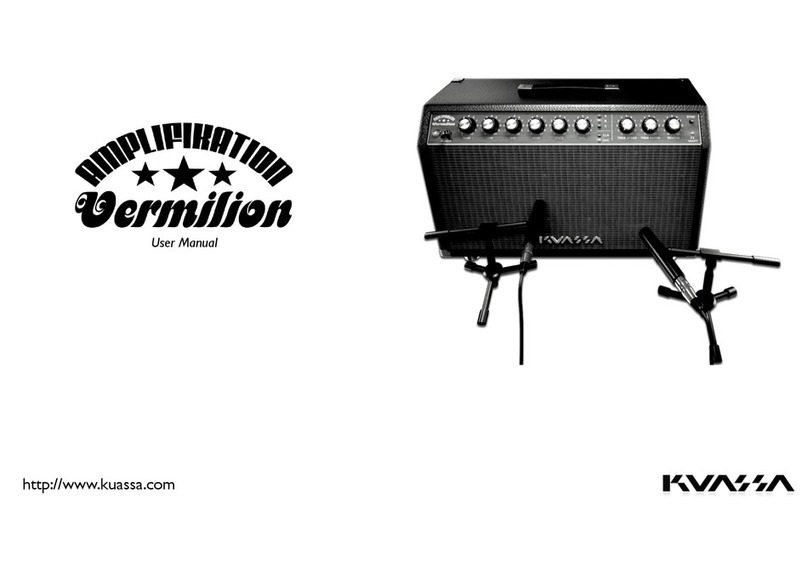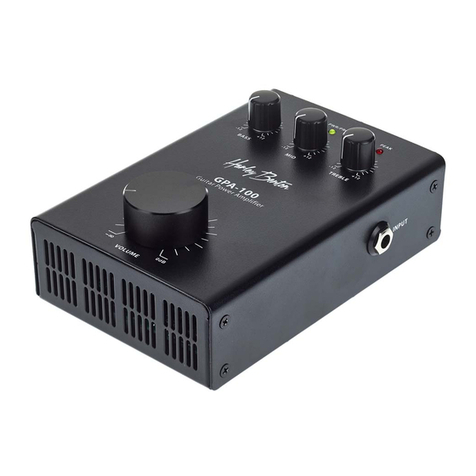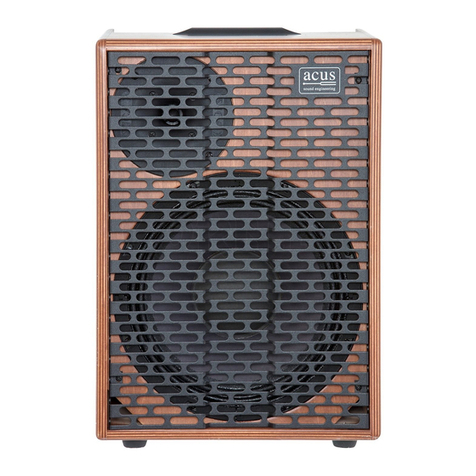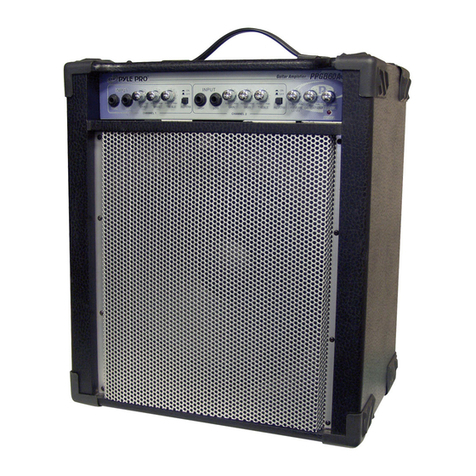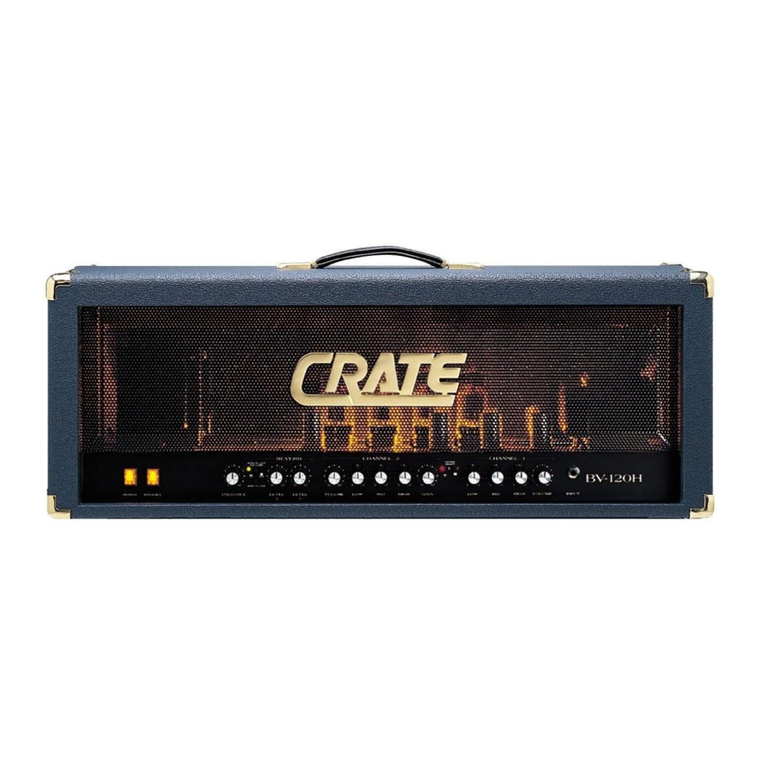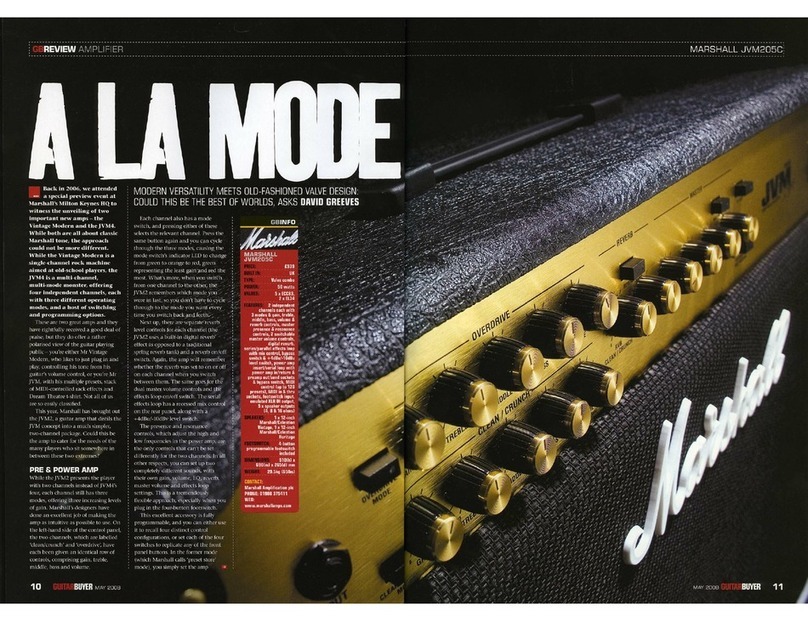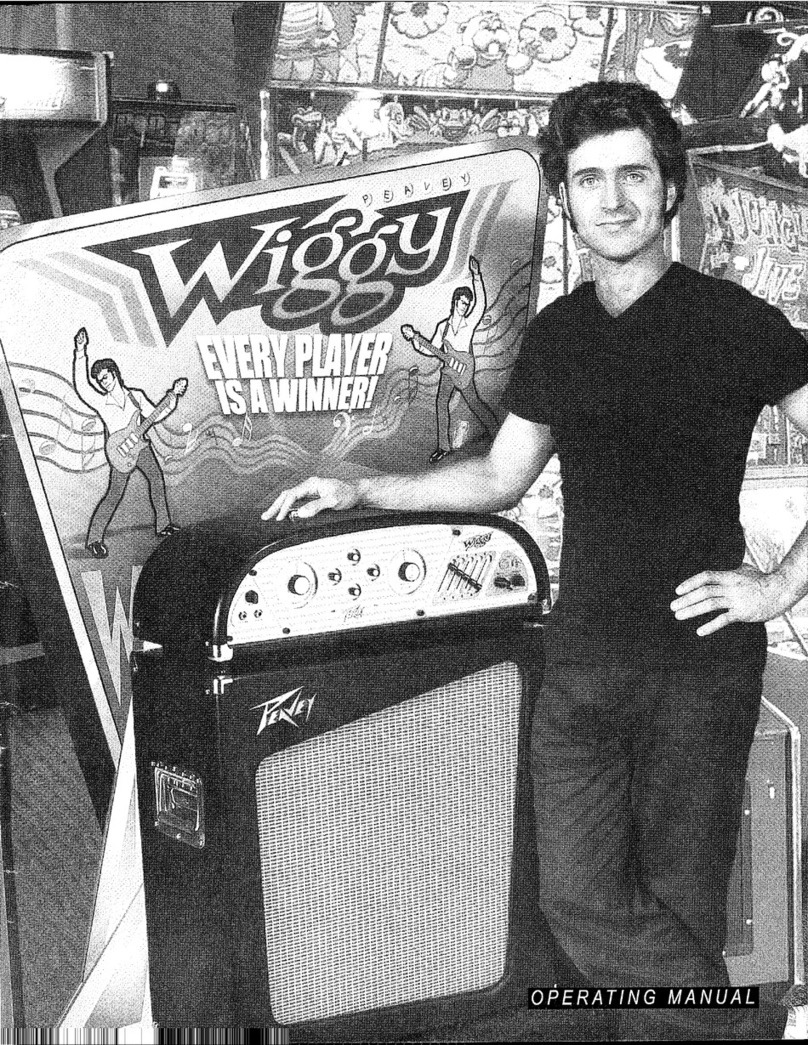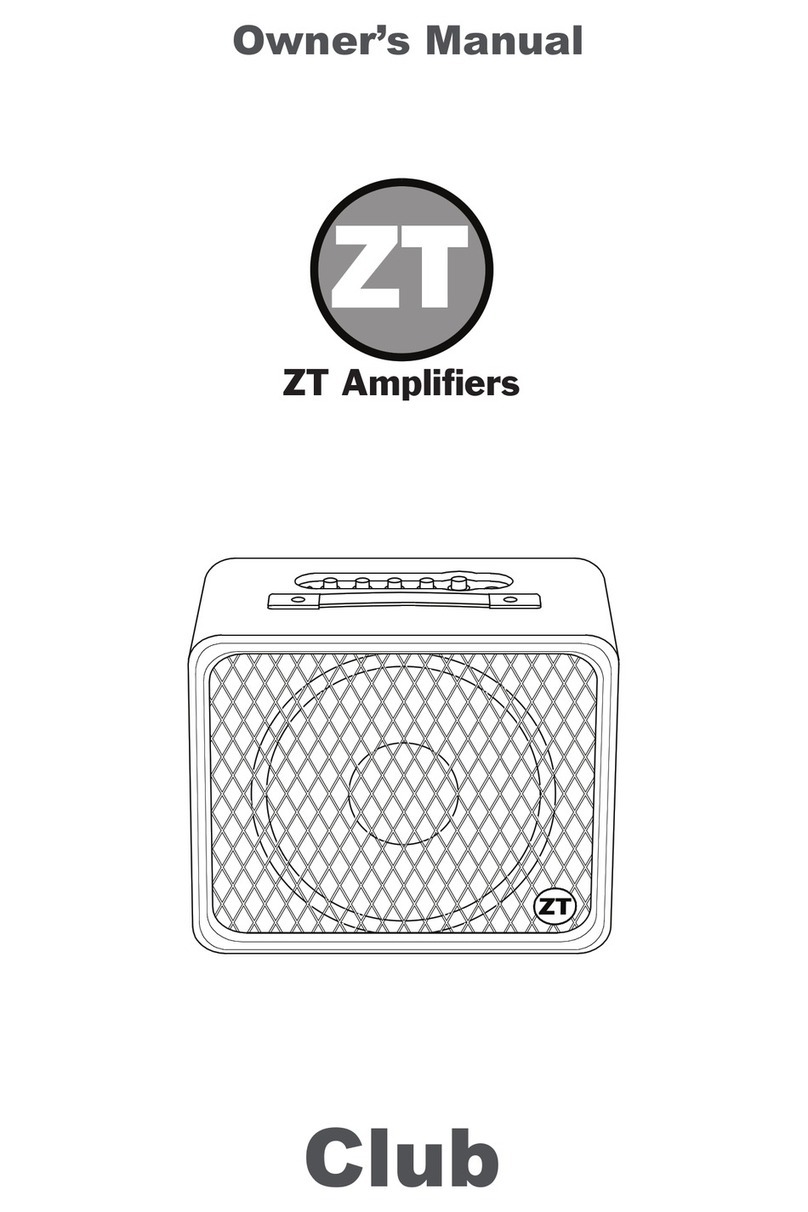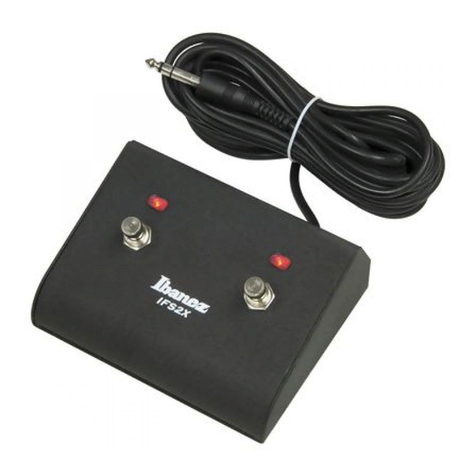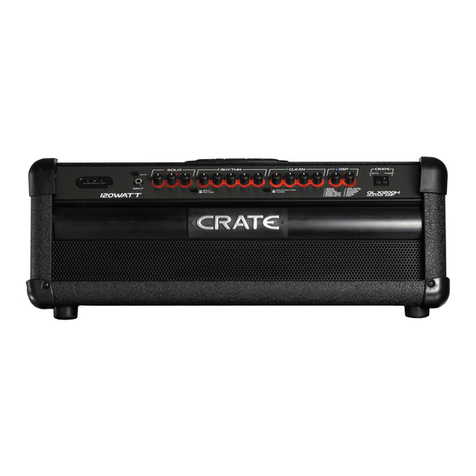
Input Jack- High impedance input to the amplifier. Plug in your instrument here.
Treble Control- Adjusts the high frequency response. In the full counter-clockwise position, high
frequencies are bypassed to ground. In the full clockwise position, high frequencies are allowed to
pass to the next gain stage.
Middle Control- Adjusts the mid-range response. In the full counter-clockwise positon, the tone will
be somewhat “scooped” of mid-range response, emphasizing the highs and lows. In the full clockwise
position, mid-range frequencies are allowed to pass to the next gain stage.
Bass Control- Adjusts the bass response. In the full counter-clockwise position, low frequencies are
cut. In addition, the response of the treble and mid-range controls is greatly reduced. In the full clock-
wise position, low frequencies are allowed to pass to the next gain stage.
Mid Switch- Boosts the mid range frequency response.
Deep Switch- Boosts the low and low-mid frequencies. This is a low frequency contour switch,
changing the low and low-mid response.
Input Gain- Adjusts the overall gain of the amplifier. Start with this control in the 12 o’clock
position. Keep in mind that the amount of gain set here determines the signal level feeding the lead
channel. Low gain settings of this control will require higher lead gain settings for the same amount of
overdrive.
Clean Channel Master Volume- Adjusts the output level of the clean channel.
Bright Switch- Boosts the high frequency response. This is most effective when the input gain is
set at 12 o’clock or lower. The effect is less dramatic as the input gain control is adjusted past the 12
o’clock position.
EQ1/EQ2- This switch allows you to choose between 2 completely different equalization settings.
EQ1 is a lower gain setting, with extended midrange and bass available when used in conjunction with
the middle and bass controls as well as the deep switch. This setting is suitable for any style requiring
a pure clean tone with a nice round bottom and plenty of headroom.
EQ2 is a higher gain setting, allowing a greater signal level to pass to the lead channel. This setting
is suitable for any style requiring a clean to slightly distorted tone in clean mode, and more gain in the
lead mode.
1.
2.
3.
4.
5.
6.
7.
8.
9.
10.
FRONT PANEL FUNCTIONS








